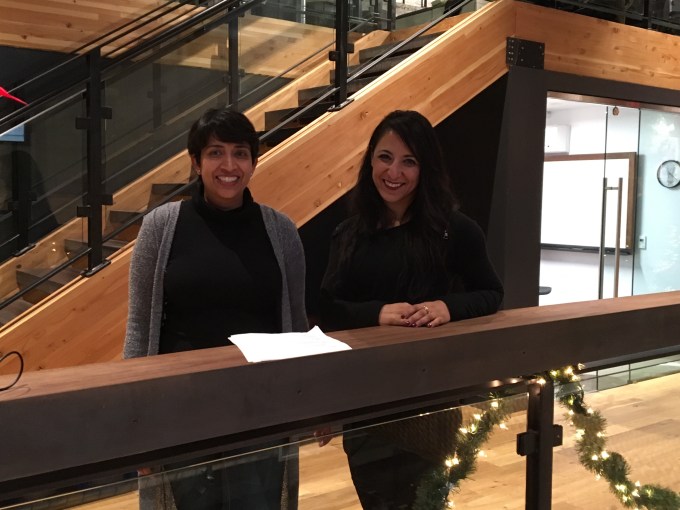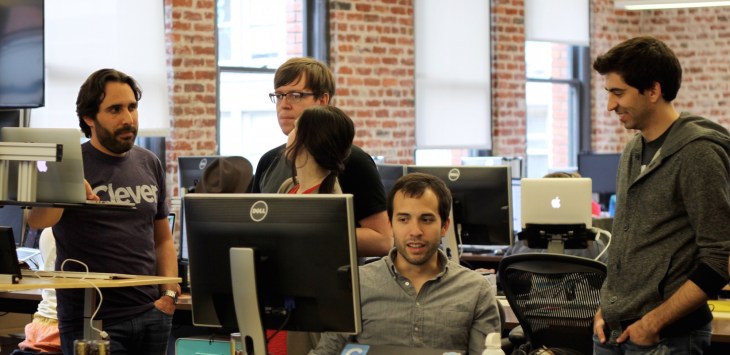Clever CEO Tyler Bosmeny says that more than 50,000 schools are now using the service — and that this year, and next, are going to be the years that education tech in general finally hits its stride.
The company creates a third-party development platform that centers around applications for teachers and students. In August 2012, Clever had only been deployed in 1,000 schools. The company raised $30 million in December last year, Clever has raised $44.3 million in total.
“For us, I’m sure you hear this all the time, but education is really hard to get traction and really hard for good ideas to spread,” Bosmeny said. “And so far that hasn’t been the case with Clever. We have more than 1 in 3 schools in America using our tech. It’s almost entirely public schools, in big urban districts.”
To help Clever continue growing, the company’s brought on a couple new hires: Renette Youssef, formerly of CrowdFlower, and Roli Saxena, recently of LinkedIn. We sat down with Bosmeny to get a quick update and his thoughts on 2015 and 2016.
TC: What were some of the biggest surprises in education tech in 2015?
TB: I would say by far the biggest is the focus on student data privacy. A year ago there weren’t many of us talking about this and now it has become a central issue for schools who are trying to adapt to this new world. Also, there’s the flood of apps into the classroom. We talk to districts they were using two or three pieces of software two to three years ago, now they’re trying to use 30. This is public schools, everywhere, technology’s finally happening in education, which is exciting, but there are also new challenges with that.
TC: Can you talk about some new hires?
TB: We’d never had any marketing at Clever. It’s been entirely through organic growth, word of mouth, and the applications themselves advocating schools to use Clever. We realized we needed to invest in brand and message. So we wanted to get a world class person to build this function at clever. So we found [Youssef] from Crowdflower, and with this huge base of districts and applications on our platform, we needed a leader to come in and help us grow those relationships. We really wanted to find a world class hire here, we looked for a while to find the right leader for this function. That’s where [Saxena] came in.

TC: What are some of your predictions for education tech in 2016?
TB: I don’t think the student data privacy goes away at all, I think schools are using more and more tech, there’s a growing dialog to come together and get this right. Schools are using way more software, they’re paying attention to results they’re getting from software. It’s not software for software’s sake. So they’re actually thinking about it in a much more strategic way as a way to drive learning outcomes. That’s been the promise of software in the classroom for over a decade I guess.
TC: How about growing internationally?
TB: It’s something we’re thinking about. We’ve had a lot of countries inquire about using Clever, it’s not something we’re actively doing right now, but with the right team in place and the right traction in the US it’s something that could be useful in any country.
TC: What are some of your big takeaways from 2015?
TB: For me, 2015 was the year that Clever hit its stride, lots of growth on the schools side, tons of growth on the engagement and usage side. We moved into a new HQ in Soma and grew from 40 to 90 people, we have these amazing outside VPs to join the team, that’s how I’ll look back at 2015 for Clever.
“It would not surprise me in 10 years if we look back on 2015 and 2016 as the years that software really started making a difference in education.” Tyler Bosmeny
In terms of the other part, educational tech generally, I think 2014, 2015 we saw a lot of schools experimenting with technology. Then you look at the results they had, thinking Summit Public Schools on the west coast, and you look at the phenomenal results they’ve been able to achieve, blending software with regular instruction, I think 2015 is the year that people felt like they could use more software. We saw lots of districts that were ordinarily slow to adopt really embracing software. It would not surprise me in 10 years if we look back on 2015 and 2016 as the years that software really started making a difference in education.
TC: What are some of the biggest challenges in education tech right now?
TB: The biggest meme about education, and I think back to the number of people who tried to talk us out of starting Clever, the most common refrain is it’s impossible to get traction in education. I think, Clever has really buffed that trend, our business model and others have allowed that, but I still think today that’s a lot of the problems for companies entering education for the first time. That’s what people ask me about.
Second is, these problems around data. So much attention and conversation now is centered around the data, everyone who’s working in education is trying to stay ahead of the curve here. At Clever our goal is to set a new bar in the industry for student data and privacy.
Anther big thing, this is just true for every district, they have well-meaning teachers who use lots of software, but it’s kind of like the wild west — they’re using all sorts of software that the school and district doesn’t have visibility into whats going on. So it creates questions around what’s happening to the data. This is one of the biggest concerns districts have today, on one hand they’re embracing all this software, but on the other hand its creating questions around data privacy, especially when its being done with individual teachers. I think that’s something, if you talk to any district admin, it’s one of the top concerns.
TC: What are Clever’s next steps?
TB: For us, we are focused on ubiquity. Our goal is to be able to help every school in America that wants to use Clever can use Clever, until any application doesn’t have to worry about data integration again. That’s our north star, that’s what we’re focused on.
